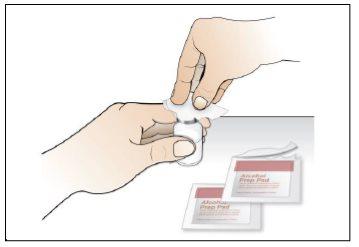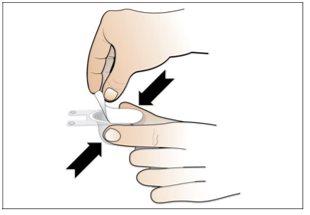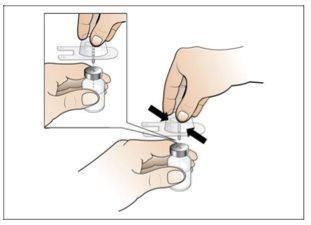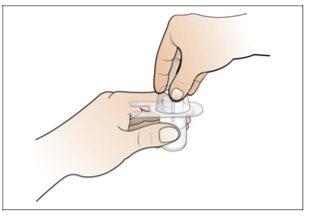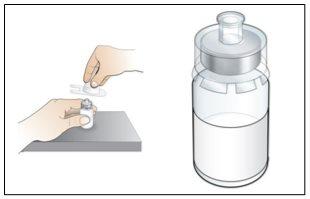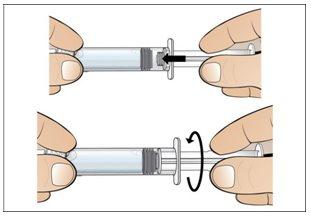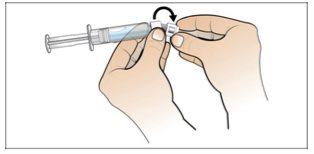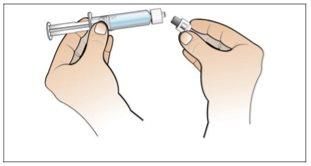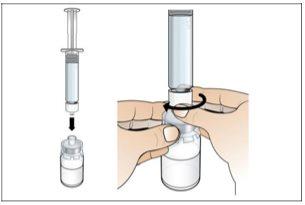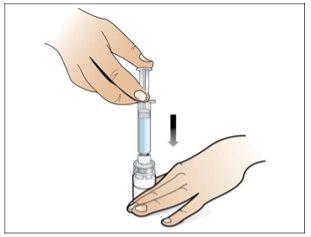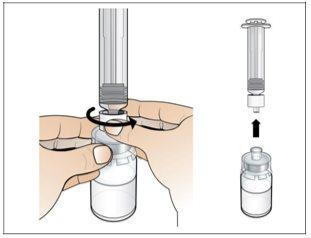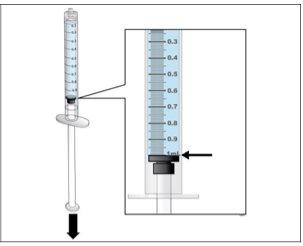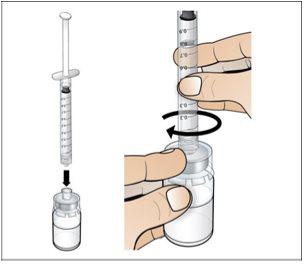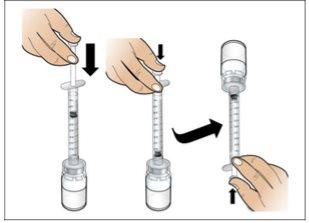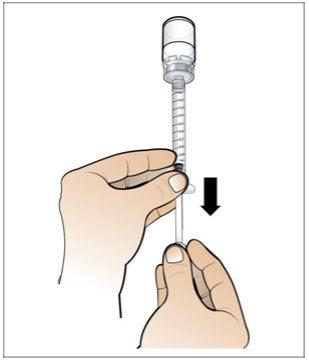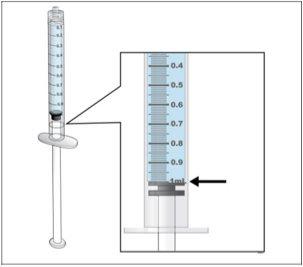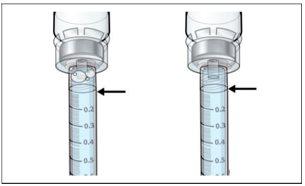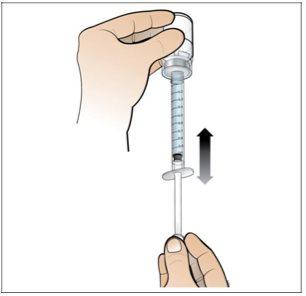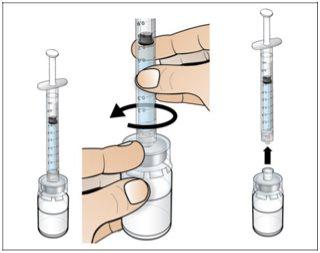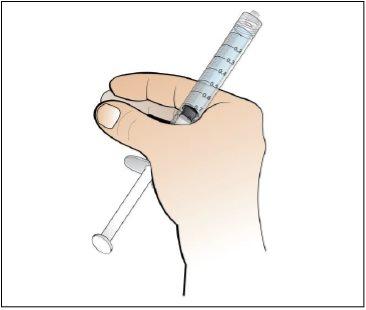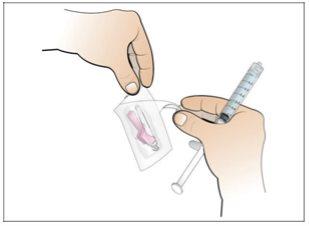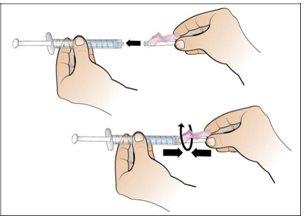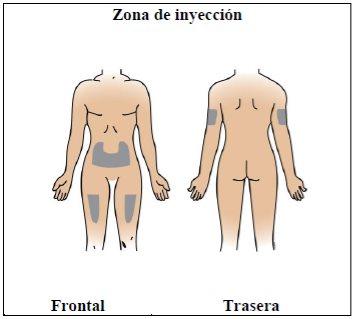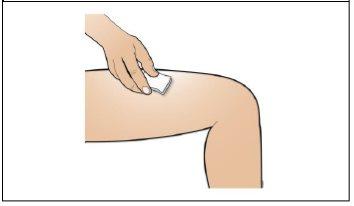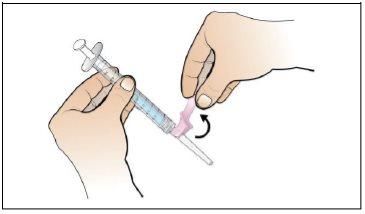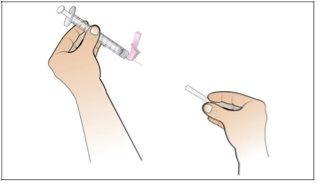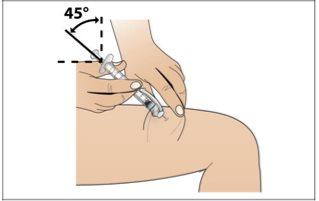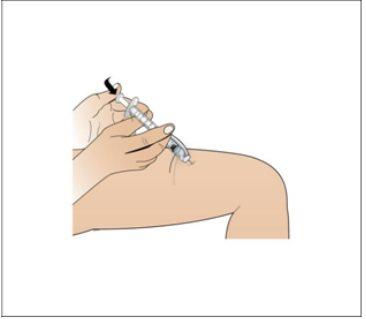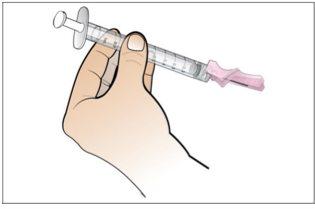

НПЛЕЙТ 250 мікрограмів ПОРОШОК І РОЗЧИННИК ДЛЯ ПРИГОТУВАННЯ ІН'ЄКЦІЙНОГО РОЗЧИНУ

Запитайте лікаря про рецепт на НПЛЕЙТ 250 мікрограмів ПОРОШОК І РОЗЧИННИК ДЛЯ ПРИГОТУВАННЯ ІН'ЄКЦІЙНОГО РОЗЧИНУ

Інструкція із застосування НПЛЕЙТ 250 мікрограмів ПОРОШОК І РОЗЧИННИК ДЛЯ ПРИГОТУВАННЯ ІН'ЄКЦІЙНОГО РОЗЧИНУ
Введення
Опис: інформація для користувача
Nplate 250 мкг порошок і розчинник для ін'єкційного розчину
Nplate 500 мкг порошок і розчинник для ін'єкційного розчину
роміплостим
Прочитайте уважно весь опис перед тим, як почнете використовувати цей лікарський засіб, оскільки він містить важливу інформацію для вас.
- Збережіть цей опис, оскільки вам може знадобитися знову його прочитати.
- Якщо у вас є якісь питання, проконсультуйтеся з вашим лікарем, фармацевтом або медсестрою.
- Цей лікарський засіб призначений тільки для вас, і не слід давати його іншим людям, навіть якщо вони мають такі самі симптоми, як і ви, оскільки це може їм нашкодити.
- Якщо ви відчуваєте побічні ефекти, проконсультуйтеся з вашим лікарем, фармацевтом або медсестрою, навіть якщо це побічні ефекти, які не вказані в цьому описі. Див. розділ 4.
Зміст опису
- Що таке Nplate і для чого він використовується
- Що потрібно знати перед тим, як почати використовувати Nplate
- Як використовувати Nplate
- Можливі побічні ефекти
- Збереження Nplate
- Зміст упаковки та додаткова інформація
- Інструкції з підготовки та введення ін'єкції Nplate
1. Що таке Nplate і для чого він використовується
Активний інгредієнт Nplate - роміплостим, який є білком, що використовується для лікування низького рівня тромбоцитів у пацієнтів з первинною імунною тромбоцитопенією (ПІТ). ПІТ - це захворювання, при якому імунна система організму руйнує自己的 тромбоцити. Тромбоцити - це клітини крові, які допомагають загоювати рани та утворювати кров'яні згустки. Низький рівень тромбоцитів може спричинити синяки та важкі кровотечі.
Nplate використовується у пацієнтів дорослого віку (18 років або старше) з ПІТ, яким можливо було видалено селезінку, і які раніше лікувалися кортикостероїдами або імуноглобулінами, які не мали ефекту.
Nplate діє шляхом стимуляції кісткового мозку (частини кістки, яка виробляє клітини крові) для виробництва більше тромбоцитів. Це повинно допомогти запобігти синякам та кровотечам, пов'язаним з ПІТ.
2. Що потрібно знати перед тим, як почати використовувати Nplate
Не використовувати Nplate
- якщо ви алергічні на роміплостим або на будь-який інший компонент цього лікарського засобу (вказані в розділі 6).
- якщо ви алергічні на інші лікарські засоби, вироблені за допомогою технології ДНК, яка використовує мікроорганізм Escherichia coli(E. coli).
Попередження та застереження
- Якщо ви припиняєте приймати Nplate, ймовірно, що у вас знову з'явиться низький рівень тромбоцитів (тромбоцитопенія). Якщо ви припиняєте приймати Nplate, ваш рівень тромбоцитів потрібно буде контролювати, і ваш лікар порадить вам щодо необхідних заходів.
- Якщо у вас є ризик утворення кров'яних згустків або якщо кров'яні згустки часто трапляються у вашій сім'ї. Ризик утворення кров'яних згустків також може бути підвищений, якщо:
- у вас є проблеми з печінкою;
- ви старше 65 років;
- ви лежите в ліжку;
- у вас є рак;
- ви приймаєте контрацептивні таблетки або гормональну терапію;
- ви недавно перенесли операцію або травму;
- ви маєте надмірну вагу;
- ви курите.
Проконсультуйтеся з вашим лікарем, фармацевтом або медсестрою перед тим, як почати використовувати Nplate.
Якщо у вас є дуже високий рівень тромбоцитів, це може збільшити ризик утворення кров'яних згустків. Ваш лікар коригуватиме вашу дозу Nplate, щоб đảmнити, що ваш рівень тромбоцитів не буде надто високим.
Зміни в кістковому мозку (збільшення ретикуліни та можливої фібрози кісткового мозку)
Тривале використання Nplate може спричинити зміни в вашому кістковому мозку. Ці зміни можуть привести до того, що у вас будуть аномальні клітини крові або ваш організм буде виробляти менше клітин крові. Легка форма цих змін кісткового мозку називається "збільшення ретикуліни" і була спостережена у клінічних дослідженнях Nplate. Не відомо, чи це може прогресувати до більш серйозної форми, званої "фіброз". У ваших аналізах крові можуть з'явитися ознаки змін кісткового мозку, такі як аномалії. Ваш лікар вирішить, чи потрібно проводити аналіз кісткового мозку або чи потрібно припинити лікування Nplate.
Погіршення раку крові
Ваш лікар може вирішити провести біопсію кісткового мозку, якщо вважає це необхідним для підтвердження діагнозу ПІТ і виключення інших захворювань, таких як мієлодиспластичний синдром (МДС). Якщо у вас є МДС і ви приймаєте Nplate, це може спричинити збільшення кількості бластних клітин і погіршення МДС до прогресування до гострого мієлоїдного лейкозу, який є типом раку крові.
Втрата реакції на роміплостим
Якщо у вас спостерігається втрата реакції на роміплостим або неможливість підтримувати реакцію на тромбоцити під час лікування роміплостимом, ваш лікар з'ясує причини цього, включаючи можливість збільшення волокнистих тканин кісткового мозку (ретикуліни) або розвиток антитіл, які нейтралізують дію роміплостиму.
Діти та підлітки
Не рекомендується використовувати Nplate у дітей молодше 18 років.
Інші лікарські засоби та Nplate
Повідомте вашому лікареві або фармацевту, якщо ви приймаєте, нещодавно приймали або можете приймати інші лікарські засоби.
Якщо ви також приймаєте інші лікарські засоби, які запобігають утворенню кров'яних згустків (антитромботична або антиагрегантна терапія), існує більший ризик кровотеч.
Якщо ви приймаєте кортикостероїди, даназол і/або азатіоприн, які ви можете приймати для лікування ПІТ, можливо, потрібно буде зменшити або припинити їх прийняття при комбінації з Nplate.
Вагітність та лактація
Якщо ви вагітні або годуєте грудьми, вважаєте, що можете бути вагітною або плануєте вагітність, проконсультуйтеся з вашим лікарем або фармацевтом перед тим, як використовувати цей лікарський засіб. Не рекомендується використовувати Nplate під час вагітності, якщо тільки ваш лікар не порадить цього.
Не відомо, чи роміплостим виділяється в грудне молоко. Не рекомендується використовувати Nplate під час лактації. Рішення про припинення лактації або припинення лікування роміплостимом повинно бути прийнято з урахуванням переваг лактації для дитини та переваг лікування роміплостимом для пацієнтки.
Відповідальність за керування транспортними засобами та використання машин
Проконсультуйтеся з вашим лікарем перед тим, як керувати транспортними засобами або використовувати машини, оскільки деякі з побічних ефектів (наприклад, епізоди тимчасової головокружіння) можуть впливати на вашу здатність виконувати ці дії безпечно.
3. Як використовувати Nplate
Nplate повинен застосовуватися під безпосереднім наглядом лікаря, який точно контролює кількість введеного Nplate.
Nplate вводиться один раз на тиждень шляхом ін'єкції під шкіру (субкутанної).
Початкова доза становить 1 мкг Nplate на кілограм ваги тіла один раз на тиждень. Ваш лікар призначить вам кількість Nplate, яку потрібно використовувати. Nplate потрібно вводити один раз на тиждень для підтримання рівня тромбоцитів. Ваш лікар регулярно буде брати у вас аналізи крові, щоб оцінити, як реагують ваші тромбоцити, і коригувати дозу при необхідності.
Як тільки ваш рівень тромбоцитів буде контролюватися, ваш лікар продовжить проводити контрольні аналізи крові. Вашу дозу можна буде коригувати пізніше для забезпечення довгострокового контролю рівня тромбоцитів.
Завжди точно слідуйте інструкціям щодо застосування Nplate, які вказав ваш лікар. Якщо у вас є сумніви, проконсультуйтеся з вашим лікарем щодо застосування Nplate.
Інструкції з підготовки та введення ін'єкції Nplate
Після відповідної підготовки ваш лікар також може дозволити вам самостійно вводити Nplate. Будь ласка, прочитайте інструкції в кінці цього опису щодо того, як вводити Nplate, як обговорили з вашим лікарем. Якщо ваш лікар дозволив вам самостійно вводити, вам потрібно буде проводити регулярні зустрічі з ним кожні місяць, щоб він міг визначити, чи діє Nplate або чи потрібно розглянути інше лікування.
Після першого місяця самостійного введення Nplate вам потрібно буде продемонструвати, що ви все ще можете правильно підготувати та вввести Nplate.
Якщо ви використовуєте більше Nplate, ніж потрібно
Ваш лікар забезпечить, щоб ви отримували відповідну кількість Nplate. Якщо ви отримали більше Nplate, ніж потрібно, ви можливо не відчуєте жодних фізичних симптомів, але ваш рівень тромбоцитів у крові може збільшитися до дуже високого рівня, що може збільшити ризик утворення кров'яних згустків. Тому, якщо ваш лікар підозрює, що ви отримали більше Nplate, ніж потрібно, рекомендується проводити контроль для спостереження за будь-якими ознаками або симптомами побічних ефектів та проведення відповідного лікування негайно.
Якщо ваш лікар дозволив вам самостійно вводити та ви використовуєте більше Nplate, ніж потрібно, негайно повідомте вашому лікареві.
Якщо ви використовуєте менше Nplate, ніж потрібно
Ваш лікар забезпечить, щоб ви отримували відповідну кількість Nplate. Якщо ви отримали менше Nplate, ніж потрібно, ви можливо не відчуєте жодних фізичних симптомів, але ваш рівень тромбоцитів у крові може знизитися до низького рівня, що може спричинити ризик кровотечі. Тому, якщо ваш лікар підозрює, що ви отримали менше Nplate, ніж потрібно, рекомендується проводити контроль для спостереження за будь-якими ознаками або симптомами побічних ефектів та проведення відповідного лікування негайно.
Якщо ваш лікар дозволив вам самостійно вводити та ви використовуєте менше Nplate, ніж потрібно, негайно повідомте вашому лікареві.
Якщо ви забули використовувати Nplate
Якщо ви забули прийняти дозу Nplate, ваш лікар призначить, коли вам потрібно прийняти наступну дозу.
Якщо ваш лікар дозволив вам самостійно вводити та ви забули введення ін'єкції, негайно повідомте вашому лікареві.
Якщо ви припиняєте лікування Nplate
Якщо ви припиняєте використовувати Nplate, ймовірно, що у вас знову з'явиться низький рівень тромбоцитів (тромбоцитопенія). Ваш лікар вирішить, чи потрібно припинити лікування Nplate.
Самостійне введення Nplate
Ваш лікар може вирішити, що краще, якщо ви будете самостійно вводити Nplate. Ваш лікар, медсестра або фармацевт покажуть вам, як вводити Nplate. Не намагайтесь вводити себе, якщо ви не пройшли підготовку. Дуже важливо, щоб ви правильно підготували Nplate та прийняли правильну дозу (див. розділ 7. Інструкції з підготовки та введення ін'єкції Nplate в кінці цього опису).
4. Можливі побічні ефекти
Як і всі лікарські засоби, цей лікарський засіб може спричиняти побічні ефекти, хоча не всі люди їх відчувають.
Дуже часто: можуть впливати на більше ніж 1 з 10 осіб
- головний біль;
- алергічна реакція;
- інфекція верхніх дихальних шляхів.
Часто: можуть впливати до 1 з 10 осіб
- зміни в кістковому мозку, включаючи збільшення волокнистих тканин кісткового мозку (ретикуліни);
- важкість засипання (безсоння);
- головокружіння;
- поколювання або оніміння рук або ніг (парестезія);
- мігрень;
- червоність шкіри (рубець);
- кров'яний згусток в легеневій артерії (легенева емболія);
- нудота;
- діарея;
- біль у животі;
- розлад шлунку (диспепсія);
- запор;
- свербіння шкіри (свербіж);
- кровотеча під шкірою (екхімоз);
- синяки (conteusio);
- виразка на шкірі;
- біль у суглобах (артралгія);
- біль у м'язах або слабкість (міалгія);
- біль у руках і ногах;
- м'язовий спазм;
- біль у спині;
- біль у кістках;
- втома (фатига);
- реакція на місці ін'єкції;
- набухання рук і ніг (периферичний едема);
- симптоми, подібні до грипу (грипоподібна хвороба);
- біль;
- слабкість (астенія);
- гарячка (пірексія);
- озноб;
- синяки;
- набухання обличчя, губ, рота, язика або горла, яке може спричинити труднощі з ковтанням або диханням (ангіоневротичний едема);
- гastroenteritis;
- серцебиття;
- воспалення синусів (синусит);
- воспалення дихальних шляхів (бронхіт);
- утворення кров'яних згустків у венах (глибока венозна тромбоз).
Часто: можуть впливати до 1 з 10 осіб (можуть бути виявлені в аналізах крові або сечі)
- низький рівень тромбоцитів у крові (тромбоцитопенія) і низький рівень тромбоцитів у крові (тромбоцитопенія) після припинення лікування Nplate;
- високий рівень тромбоцитів (тромбоцитоз);
- анемія.
Рідко: можуть впливати до 1 з 100 осіб
- зміни в кістковому мозку; порушення кісткового мозку, яке призводить до фіброзу (мієлофіброз); збільшення розміру селезінки (спленомегалія); кровотеча з вагіни (вагінальна кровотеча), кровотеча з прямої кишки (ректальна кровотеча); кровотеча з рота (оральна кровотеча); кровотеча на місці ін'єкції (кровотеча на місці ін'єкції);
- серцевий напад (інфаркт міокарда); збільшення частоти серцевих скорочень;
- головокружіння або відчуття обертання (вертіго);
- проблеми з очима, включаючи: кровотеча в очах (кон'юнктивальна кровотеча); труднощі з фокусуванням або розмитим зором (розлад акомодації, папіледема або розлад очей); сліпота; свербіння в очах (окулярний свербіж); збільшення сльозотечі (гіперлазиморея); або порушення зору;
- проблеми з травною системою, включаючи: блювота; поганий запах з рота (галітоз); труднощі з ковтанням (дисфагія); розлад шлунку або кислотний рефлюкс (гастроезофагеальна рефлюксна хвороба); кров у фекаліях (гематохезія); розлад шлунку; виразки в роті або пухирі в роті (стоматит); зміна кольору зубів (дисколорація зубів);
- втрата ваги; збільшення ваги; непереносимість алкоголю; втрата апетиту (анорексія або зниження апетиту); зневоднення;
- загальне відчуття нездоров'я (малайз); біль у грудній клітці; раздражливість; набухання обличчя (фасіальний едема); відчуття жару; підвищення температури тіла; відчуття нервозності;
- грип; локалізована інфекція; запалення носових проходів і горла (насофарингіт);
- проблеми з носом і горлом, включаючи: кашель; виділення з носа (ринорея); сухість у горлі; відсутність дихання або труднощі з диханням (диспное); кон'юнктивіт; біль при диханні (болісне дихання);
- запалення суглобів, яке спричиняє біль і набухання, викликане сечовою кислотою (подагра);
- ригідність м'язів; слабкість м'язів; біль у плечах; м'язові спазми;
- проблеми з нервовою системою, включаючи: м'язові спазми (клонус); порушення смаку (дисгевзія); зниження смаку (гіпогевзія); відчуття зниження чутливості, особливо на шкірі (гіпоестезія); порушення функцій нервів у руках і ногах (периферична нейропатія); утворення кров'яних згустків у синусах (тромбоз синусів);
- депресія; порушення сну;
- втрата волосся (алопеція); чутливість до світла (фотосенсибілізація); акне; алергічна реакція на шкірі при контакті з алергенами (контактний дерматит); виразки на шкірі з свербінням (екзема); сухість шкіри; червоність шкіри (еритема); лущення шкіри (ексфоліативний дерматит); аномальний ріст волосся; загрубіння та свербіння шкіри при повторному терті (пруриго); кровотеча під шкірою або синяки під шкірою (пурпура); виразка на шкірі з свербінням (папулярна виразка); виразка на шкірі з свербінням (пруригінозна виразка); загальна виразка з свербінням (уртикарний висип); вузлик на шкірі (папула); аномальний запах шкіри (анормальний запах шкіри);
- проблеми з циркуляцією крові, включаючи: утворення кров'яних згустків у венах печінки (тромбоз порталної вени); низький тиск крові (гіпотонія); підвищення тиску крові; блокування кров'яних судин (периферичний емболізм); зниження кровотоку в руках, ногах або ступнях (периферична ішемія); набухання та утворення кров'яних згустків у венах, яке може бути дуже м'яким на дотик (флебіт або поверхнева тромбофлебіт); утворення кров'яних згустків (тромбоз);
- рідка порушення, характеризована періодами болю з палінням, червоністю та жаром на ногах і руках (еритромелалгія).
Рідко: можуть впливати до 1 з 100 осіб (можуть бути виявлені в аналізах крові або сечі)
- рідкий тип анемії, при якому кількість червоних клітин крові, білих клітин крові та тромбоцитів знижена (апластична анемія);
- збільшення кількості білих клітин крові (лейкоцитоз);
- надмірна продукція тромбоцитів (тромбоцитемія); збільшення кількості тромбоцитів; аномальний рівень тромбоцитів;
- порушення деяких аналізів крові (збільшення трансаміназ; збільшення лактатдегідрогенази крові);
- або рак білих клітин крові (мієломна хвороба);
- білки в сечі.
Звіт про побічні ефекти
Якщо ви відчуваєте будь-які побічні ефекти, проконсультуйтеся з вашим лікарем, фармацевтом або медсестрою, навіть якщо це побічні ефекти, які не вказані в цьому описі. Ви також можете повідомити про них безпосередньо через національну систему повідомлень, вказану в додатку V. повідомляючи про побічні ефекти, ви можете допомогти забезпечити більше інформації про безпеку цього лікарського засобу.
5. Збереження Nplate
Тримайте цей лікарський засіб поза зоною досяжності дітей.
Не використовувати цей лікарський засіб після закінчення терміну придатності, вказаного на упаковці та на етикетці флакона після "CAD". Термін придатності - останній день місяця, який вказано.
Тримати в холодильнику (між 2°C та 8°C).
Не заморожувати.
Тримати в оригінальній упаковці, щоб захистити від світла.
Коли лікарський засіб тримається в оригінальній упаковці, його можна тримати поза холодильником протягом максимального терміну 30 днів при кімнатній температурі (до 25°C).
Лікарські засоби не повинні викидатися в каналізацію або сміттєві контейнери. Спитайте в вашого фармацевта, як позбутися упаковок та лікарських засобів, які вам не потрібні. Таким чином ви допоможете захистити навколишнє середовище.
6. Зміст упаковки та додаткова інформація
Склад Нплейт
- Активний інгредієнт - роміплостим.
Кожна флакона Нплейт 250 мкг порошок для ін'єкційної розчини містить загалом 375 мкг роміплостиму. До кожної флакони додано додатковий об'єм, щоб забезпечити можливість введення 250 мкг роміплостиму. Після розчинення об'єм кінцевого продукту 0,5 мл розчини містить 250 мкг роміплостиму (500 мкг/мл).
Кожна флакона Нплейт 500 мкг порошок для ін'єкційної розчини містить загалом 625 мкг роміплостиму. До кожної флакони додано додатковий об'єм, щоб забезпечити можливість введення 500 мкг роміплостиму. Після розчинення об'єм кінцевого продукту 1 мл розчини містить 500 мкг роміплостиму (500 мкг/мл).
- Інші компоненти:
Порошок: манітол (Е421), сукроза, л-гістидин, хлоридна кислота (для регулювання pH) і полісорбат 20.
Розчинник: вода для ін'єкційних препаратів.
Вигляд продукту та вміст упаковки
Нплейт - білий порошок для ін'єкційної розчини, який поставляється в скляній флаконі об'ємом 5 мл для одноразового використання.
Нплейт поставляється в упаковці або мультиупаковці по 4 упаковки. Кожна упаковка містить:
1 флакон 250 мкг або 500 мкг роміплостиму.
1 предварительно наповнена шприц, яка містить 0,72 або 1,2 мл води для ін'єкційних препаратів для реконституції.
1 поршень для предварительно наповненої шприци.
1 стерильний адаптер флакони.
1 стерильна шприц об'ємом 1 мл з луер-з'єднанням.
1 стерильна голка-безпека.
4 ватні тампони.
Можливо, що тільки деякі розміри упаковок будуть випускатися.
Уповноважена особа та відповідальна особа за виробництво
Amgen Europe B.V.
Minervum 7061
4817 ZK Breda
Нідерланди
Уповноважена особа
Amgen Europe B.V.
Minervum 7061
4817 ZK Breda
Нідерланди
Відповідальна особа за виробництво
Amgen Technology (Ireland) Unlimited Company
Pottery Road
Dun Laoghaire
Co Dublin
Ірландія
Відповідальна особа за виробництво
Amgen NV
Telecomlaan 5-7
1831 Diegem
Бельгія
Для отримання додаткової інформації про цей препарат зверніться до місцевого представника уповноваженої особи.
Бельгія/Бельгія/Бельгія s.a. Amgen n.v. Тел: +32 (0)2 7752711 | Литва Amgen Switzerland AG Vilniaus filialas Тел: +370 5 219 7474 |
| Люксембург/Люксембург s.a. Amgen Бельгія/Бельгія Тел: +32 (0)2 7752711 |
Чехія Amgen s.r.o. Тел: +420 221 773 500 | Угорщина Amgen Kft. Тел: +36 1 35 44 700 |
Данія Amgen filial af Amgen AB, Sverige Тел: +45 39617500 | Мальта Amgen S.r.l. Італія Тел: +39 02 6241121 |
Німеччина Amgen GmbH Тел: +49 89 1490960 | Нідерланди Amgen B.V. Тел: +31 (0)76 5732500 |
Естонія Amgen Switzerland AG Vilniaus filialas Тел: +372 586 09553 | Норвегія Amgen AB Тел: +47 23308000 |
| Австрія Amgen GmbH Тел: +43 (0)1 50 217 |
Іспанія Amgen S.A. Тел: +34 93 600 18 60 | Польща Amgen Biotechnologia Sp. z o.o. Тел: +48 22 581 3000 |
Франція Amgen S.A.S. Тел: +33 (0)9 69 363 363 | Португалія Amgen Biofarmacêutica, Lda. Тел: +351 21 4220606 |
Хорватія Amgen d.o.o. Тел: +385 (0)1 562 57 20 | Румунія Amgen România SRL Тел: +4021 527 3000 |
Ірландія Amgen Ireland Limited Тел: +353 1 8527400 | Словенія AMGEN здравила d.o.o. Тел: +386 (0)1 585 1767 |
Ісландія Vistor hf. Тел: +354 535 7000 | Словаччина Amgen Slovakia s.r.o. Тел: +421 2 321 114 49 |
Італія Amgen S.r.l. Тел: +39 02 6241121 | Фінляндія Amgen AB, sivuliike Suomessa/Amgen AB, filial Тел: +358 (0)9 54900500 |
Кіпр C.A. Papaellinas Ltd Тел: +357 22741 741 | Швеція Amgen AB Тел: +46 (0)8 6951100 |
Латвія Amgen Switzerland AG Rigas filiale Тел: +371 257 25888 |
Дата останнього перегляду цього листка в
Інші джерела інформації
Детальна інформація про цей препарат доступна на сайті Європейського агентства з лікарських засобів http://www.ema.europa.eu
- Інструкції з підготовки та введення ін'єкції Нплейт
Цей розділ містить інформацію про те, як самостійно вводити Нплейт. Важливо не намагатися самостійно вводити ін'єкцію, якщо ви не пройшли навчання у свого лікаря, медсестри або фармацевта. Якщо у вас є питання щодо введення ін'єкції, зверніться до свого лікаря, медсестри або фармацевта. Дуже важливо, щоб продукт був правильно підготовлений і введена доза була правильною.
Цей розділ розділений на наступні підрозділи:
Перед початком
Крок 1. Розмістіть матеріали для ін'єкції
Крок 2. Підготовіть флакон для використання, встановіть адаптер флакону
Крок 3. Підготовіть шприц з стерильною водою
Крок 4. Розчиніть Нплейт, ввівши воду у флакон
Крок 5. Підготовіть новий шприц для ін'єкції
Крок 6. Підготовіть голку для ін'єкції
Крок 7. Виберіть і підготуйте місце ін'єкції
Крок 8. Введіть рідину Нплейт
Крок 9. Виведення матеріалів
Перед початком
Прочитайте всі інструкції з використання уважно.Ці інструкції призначені для пацієнтів, які вже пройшли навчання у свого медичного спеціаліста, такого як лікар, медсестра або фармацевт, щодо самостійного введення ін'єкції. Якщо ви не пройшли навчання, зверніться до свого медичного спеціаліста.
Набір для самостійного введення Нплейт повинен зберігатися в оригінальній упаковці до його використання, щоб захистити флакон Нплейт від світла. Зберігайте набір для самостійного введення Нплейт у холодильнику при температурі між 2°C і 8°C.
Після розчинення Нплейт введіть негайно.
Можливо, що після введення призначеної дози залишиться надлишок Нплейт. Не повторно використовуйте Нплейт!Будь-який надлишок розчиненого Нплейт повинен бути видалений негайно після завершення процесу ін'єкції. Залишок Нплейт у флаконі НІКОЛИне повинен бути повторно використаний для іншої ін'єкції.
Крок 1. Розмістіть матеріали для ін'єкції
Виконайте наступне:
- Виберіть плоскую поверхню, наприклад, стіл.
- Візьміть набір для самостійного введення Нплейт з холодильника. Не використовуйте, якщо він заморожений.Якщо у вас є сумніви щодо зберігання, зверніться до свого медичного спеціаліста за додатковими інструкціями.
Перевірте термін придатності, вказаний на наборі для самостійного введення. Якщо термін придатності закінчився, не використовуйте його.Не продовжуйте і повідомте про це своєму медичному спеціалісту.
- Примітка:Якщо ваш лікар призначив дозу Нплейт, яка вимагає більше однієї ін'єкції, вам потрібно буде використовувати більше одного набору для самостійного введення. Виконуйте кроки, описані в цьому листку, і використовуйте стільки наборів для самостійного введення, скільки потрібно для завершення призначеної дози Нплейт.
- Переконайтеся, що у вас є наступні компоненти:
Пакет ватних тампонів x4
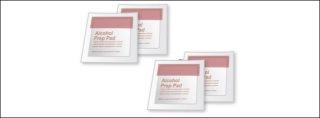
1 флакон порошку 250 мкг або | Адаптер флакону 13 мм x1 |
500 мкг x1 | |

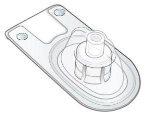
Поршень для шприца з стерильною водою x1Шприц з стерильною водою x1

Шприц об'ємом 1 мл з луер-з'єднанням x1Голка-безпека для ін'єкції x1

- Невідкривайте елементи до тих пір, поки не буде вказано в інструкціях.
- Невикористовуйте пошкоджені або змінені компоненти.
- Неповторно використовуйте компоненти.
Крок 2. Підготовіть флакон для використання, встановіть адаптер флакону
Використовуйте:2 пакети ватних тампонів, 1 флакон і 1 пакет адаптера флакону.
Виконайте наступне:
(250 мкг)або (500 мкг)з флакону. |
|
|
|
|
|
|
|
|
|
|
|
Крок 3. Підготовіть шприц з стерильною водою
Використовуйте:Шприц з стерильною водою і поршень.
Перед початком кроку 3, зверніть увагу на наступне:
- Пластиковий прозорий поршень ЗАВЖДИповинен бути підключений до того, як видалити білу кришку з шприца з стерильною водою. Виконайте крок 3а перед кроком 3б.
Виконайте наступне:
|
|
|
|
|
|
Крок 4. Розчиніть Нплейт, ввівши воду у флакон
Використовуйте:Шприц з стерильною водою і флакон з адаптером флакону.
Перед початком кроку 4, зверніть увагу на наступне:
- Розчинітьповільно і обережно. Це білок і, як такий, може бути легко пошкоджений неправильним перемішуванням і надмірним переміщенням.
Виконайте наступне:
|
|
|
Поштовхніть повільно і обережно |
Перед продовженням:
- Переконайтеся,що вся вода ввійшла з шприца у флакон перед розчиненням.
|
Правильно |
|
Неправильно |
Перед продовженням:
- Перегляньтевізуально розчинену рідину на наявність частинок і/або забарвлення. Вона повинна бути прозорою та безколірною і повністю розчиненою.
- Примітка:Якщо є будь-який колір або частинки у рідині,зверніться до свого медичного спеціаліста.
- Переконайтеся,що рідини повністю розчиненою перед видаленням шприца.
|
|
- Видаліть порожній шприцу контейнер для гострих предметів або небезпечних матеріалів. Зберігайте розчинений Нплейт у флаконі. Негайно підготуйте новий шприц для ін'єкції.
- Незатримуйте введення Нплейт
Крок 5. Підготовіть новий шприц для ін'єкції
Використовуйте:Новий шприц об'ємом 1 мл з упаковки і флакон з розчиненим Нплейтом.
Перед продовженням:
- Перегляньтесвою дозу перед початком цього кроку.
- Примітка:Рідини Нплейт дуже потужні, тому точність і вимірювання дози важливі.
- Переконайтеся,що всі повітряні бульбашки були видалені перед ін'єкцією.
Виконайте наступне:
|
|
Впустіть повітря всередину шприца до позначки 1 мл | |
|
|
|
Поверніть вниз |
|
|
|
Правильно |
|
Повітряні бульбашки: Правильно Неправильно |
|
Коригуйте кількість до призначеної дози |
- Проведіть остаточну перевірку, щоб переконатися у тому, що правильна кількість рідини для дози знаходиться у шприціта що всі повітряні бульбашки видалені.
Перед продовженням:
- Переконайтесяу тому, що правильна кількість рідини для дози залишається у шприці.
- Переконайтесяу тому, що всі повітряні бульбашки видалені з шприца.
|
|
|
|
Крок 6. Підготовка голки для ін'єкції
Використовуйте:Наповнений шприц з виміряною дозою Nplate та голку безпеки.
Виконайте наступне:
|
|
|
|
Крок 7. Виберіть та підготуйте місце ін'єкції
Використовуйте:Нові спиртові серветки.
Виконайте наступне:
|
|
|
|
Крок 8. Введіть рідину Nplate
Використовуйте:Набір з наповненим шприцем та голкою.
Виконайте наступне:
|
|
|
|
|
|
|
|
|
|
|
|
Крок 9. Видалення матеріалів
Виконайте наступне:
- Відразу видаліть шприц з голкоюдо контейнера для колючих предметів.
- Відразу видаліть використаний флакон Nplateдо відповідного контейнера для відходів.
- Переконайтесяу тому, що всі залишкові матеріали видалені до відповідних контейнерів.
Пристрій для ін'єкції та флакон Nplate НІКОЛИне повинні бути повторно використані.
- Видалітьвикористану голку та шприц до контейнера, стійкого до колючих предметів.
Видалітьбудь-які залишкові кількості Nplate до відповідного контейнера для відходів. Залишкові кількості флакону Nplate НІКОЛИ не можуть бути повторно використані для іншої ін'єкції.
- Країна реєстрації
- Діючі речовини
- Потрібен рецептТак
- Виробник
- Інформація є довідковою і не є медичною порадою. Перед прийомом будь-яких препаратів обов'язково проконсультуйтеся з лікарем. Oladoctor не несе відповідальності за медичні рішення, прийняті на основі цього контенту.
- Альтернативи до НПЛЕЙТ 250 мікрограмів ПОРОШОК І РОЗЧИННИК ДЛЯ ПРИГОТУВАННЯ ІН'ЄКЦІЙНОГО РОЗЧИНУФорма випуску: РОЗЧИН ДЛЯ ІН'ЄКЦІЙ, 250 мкгДіючі речовини: romiplostimВиробник: Amgen Europe B.V.Потрібен рецептФорма випуску: РОЗЧИН ДЛЯ ІН'ЄКЦІЙ, 500 мкгДіючі речовини: romiplostimВиробник: Amgen Europe B.V.Потрібен рецептФорма випуску: РОЗЧИН ДЛЯ ІН'ЄКЦІЙ, 500 мкгДіючі речовини: romiplostimВиробник: Amgen Europe B.V.Потрібен рецепт
Аналоги НПЛЕЙТ 250 мікрограмів ПОРОШОК І РОЗЧИННИК ДЛЯ ПРИГОТУВАННЯ ІН'ЄКЦІЙНОГО РОЗЧИНУ в інших країнах
Найкращі аналоги з тією самою діючою речовиною та терапевтичним ефектом.
Аналог НПЛЕЙТ 250 мікрограмів ПОРОШОК І РОЗЧИННИК ДЛЯ ПРИГОТУВАННЯ ІН'ЄКЦІЙНОГО РОЗЧИНУ у Україна
Лікарі онлайн щодо НПЛЕЙТ 250 мікрограмів ПОРОШОК І РОЗЧИННИК ДЛЯ ПРИГОТУВАННЯ ІН'ЄКЦІЙНОГО РОЗЧИНУ
Консультація щодо дозування, побічних ефектів, взаємодій, протипоказань та поновлення рецепта на НПЛЕЙТ 250 мікрограмів ПОРОШОК І РОЗЧИННИК ДЛЯ ПРИГОТУВАННЯ ІН'ЄКЦІЙНОГО РОЗЧИНУ – за рішенням лікаря та згідно з місцевими правилами.







